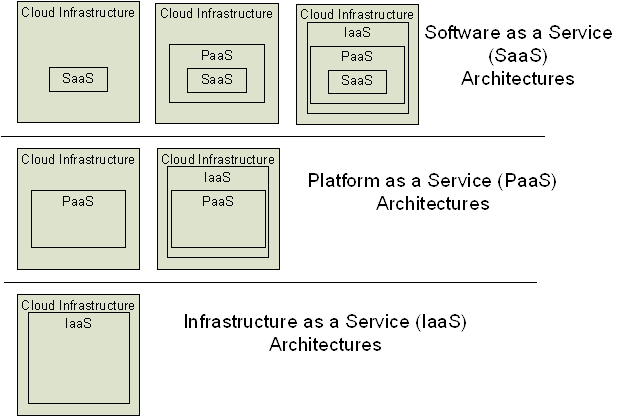Cloud Computing Basics

Introduction
Hi guys,
As per the saying “Thousand miles journey starts with a single step” I want to put my first step in the cloud computing journey with this Blog.
Since Huge Titans involved in the market to win the cloud computing domain with their own strategies there are so many discrepancies in the definition of cloud computing. Cloud computing is still an evolving paradigm. Its definitions, use cases, underlying technologies, issues, risks, and benefits will be refined in a spirited debate by the public and private sectors. These definitions, attributes, and characteristics will evolve and change over time.
Definition
Cloud computing is a model for enabling convenient, on-demand network access to a shared pool of configurable computing resources (e.g., networks, servers, storage, applications, and services) that can be rapidly provisioned and released with minimal management effort or service provider interaction.
Flavors of Clouds
Basically the Clouds are available in below three formats
- Private Cloud
- Community Cloud
- Public Cloud
Often these flavors are also called as the deployment models of the cloud.
Private Clouds
The cloud infrastructure is operated solely for an organization. It may be managed by the organization or a third party and may exist on premise or off premise.
Community Cloud
The cloud infrastructure is shared by several organizations and supports a specific community that has shared concerns (e.g., mission, security requirements, policy, and compliance considerations). It may be managed by the organizations or a third party and may exist on premise or off premise.
Public Cloud
The cloud infrastructure is made available to the general public or a large industry group and is owner by an organization selling cloud services.
Note: If we mix any of two above deployment models then it is called as Hybrid Cloud.
Essential Characteristics of Cloud Computing

On-Demand Self-Service
A consumer can unilaterally provision computing capabilities, such as server time and network storage, as needed automatically without requiring human interaction with each service’s provider.
Broad Network Access
Capabilities are available over the network and accessed through standard mechanisms that promote use by heterogeneous thin or thick client platforms (e.g., mobile phones, laptops, and PDAs).
Resource Pooling
The provider’s computing resources are pooled to serve multiple consumers using a multi-tenant model, with different physical and virtual resources dynamically assigned and reassigned according to consumer demand. There is a sense of location independence in that the customer generally has no control or knowledge over the exact location of the provided resources but may be able to specify location at a higher level of abstraction (e.g., country, state, or datacenter). Examples of resources include storage, processing, memory, network bandwidth, and virtual machines.
Rapid Elasticity
Capabilities can be rapidly and elastically provisioned, in some cases automatically, to quickly scale out and rapidly released to quickly scale in. To the consumer, the capabilities available for provisioning often appear to be unlimited and can be purchased in any quantity at any time.
Measured Service
Cloud systems automatically control and optimize resource use by leveraging a metering capability at some level of abstraction appropriate to the type of service (e.g., storage, processing, bandwidth, and active user accounts). Resource usage can be monitored, controlled, and reported providing transparency for both the provider and consumer of the utilized service.
Service Models

Cloud Software as a Service (SaaS)
The capability provided to the consumer is to use the provider’s applications running on a cloud infrastructure. The applications are accessible from various client devices through a thin client interface such as a web browser (e.g., web-based email). The consumer does not manage or control the underlying cloud infrastructure including network, servers, operating systems, storage, or even individual application capabilities, with the possible exception of limited user-specific application configuration settings.
Cloud Platform as a Service (PaaS)
The capability provided to the consumer is to deploy onto the cloud infrastructure consumer-created or acquired applications created using programming languages and tools supported by the provider. The consumer does not manage or control the underlying cloud infrastructure including network, servers, operating systems, or storage, but has control over the deployed applications and possibly application hosting environment configurations.
Cloud Infrastructure as a Service (IaaS)
The capability provided to the consumer is to provision processing, storage, networks, and other fundamental computing resources where the consumer is able to deploy and run arbitrary software, which can include operating systems and applications. The consumer does not manage or control the underlying cloud infrastructure but has control over operating systems, storage, deployed applications, and possibly limited control of select networking components (e.g., host firewalls).
Advantages
Cloud computing promises to cut operational and capital costs and, more importantly, let IT departments focus on strategic projects instead of keeping the datacenter running.
Different names are used for this kind of platform, including utility computing, on-demand platform, and platform as a service. A set of new buzzwords has been widely used in relation to cloud computing, such as Program as a Service (PaaS), Software as a Service (SaaS), and anything you can think of as a service (XaaS).
For any enterprise business solution, the cost to build, deploy, host, and maintain infrastructures and applications is always challenging for the administrative and development teams in an organization. The cloud platform aims to take away the cost of building, deploying, updating, and maintaining.
Applications used in organizations today are called on-premises applications. In this case, infrastructure and storage facilities, as well as the applications, are hosted within an organization. By contrast, both storage and application services provided by the cloud platform are hosted externally (they can also be hosted within an organization for a local cloud environment) through the Internet.